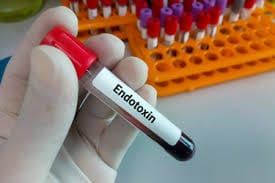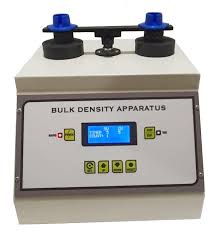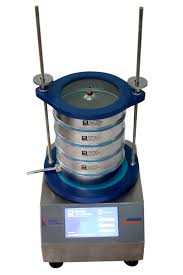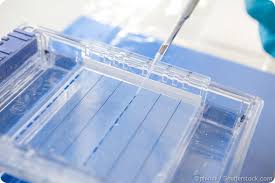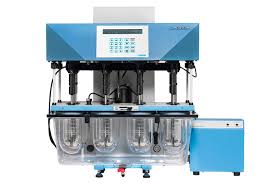|
Getting your Trinity Audio player ready... |
Dissolution Test in Pharmaceutical Quality Control
Introduction to the Dissolution Test
Dissolution Test: A dissolution test is an essential procedure in pharmaceutical quality control used to evaluate how quickly and effectively a solid dosage form, such as a tablet or capsule, dissolves in a specified liquid medium. This test simulates the conditions of the human digestive system, where the drug is intended to dissolve, be absorbed, and exert its therapeutic effect. The dissolution rate and extent are critical parameters to ensure that the drug is released and absorbed properly, which directly impacts the drug’s effectiveness and safety.
Dissolution testing is vital for several purposes, including regulatory compliance, batch-to-batch consistency, and formulation development. Moreover, it plays a significant role in determining the bioavailability of a drug, which refers to the extent and rate at which the active pharmaceutical ingredient (API) is absorbed into the bloodstream. Pharmaceutical manufacturers, therefore, must rigorously perform these tests to meet regulatory standards and ensure high-quality product output.
Principles of the Dissolution Test
The dissolution test principle is based on the concept of determining the rate and extent of dissolution of a solid dosage form. It aims to mimic the behavior of the drug when it comes in contact with bodily fluids, particularly in the gastrointestinal tract. By dissolving the active ingredient in a controlled laboratory setting, manufacturers can assess the dissolution profile and predict how the drug will behave once ingested.
The procedure typically involves placing the dosage form (tablet or capsule) in a vessel filled with a dissolution medium, which is usually a liquid that simulates bodily fluids (e.g., simulated gastric fluid, simulated intestinal fluid). The temperature and agitation of the medium are precisely controlled to reflect physiological conditions. The test involves periodically sampling the liquid medium to determine how much of the active ingredient has been dissolved at each time point. The results help in evaluating whether the drug is released at a rate that will allow it to be absorbed properly by the body.
Different Types of Dissolution Tests
There are various types of dissolution tests used depending on the drug formulation, release mechanism, and the intended use of the drug. Below are some of the common types:
- Immediate Release (IR) Dissolution Test:
- This test is used for conventional solid dosage forms (tablets or capsules) that are designed for rapid dissolution and absorption.
- Extended Release (ER) Dissolution Test:
- ER drugs release the active ingredient slowly over an extended period. These tests are longer and require specialized dissolution apparatus to simulate the gradual release mechanism.
- Modified-Release Dissolution Test:
- This is for drugs that have complex release profiles, such as pulsatile or biphasic release. These tests may involve specific dissolution mediums or apparatus to mimic the release pattern.
- Topical and Transdermal Dissolution Test:
- For products like ointments, creams, and transdermal patches, these tests assess how the drug is released through the skin.
- Inhalation Dissolution Test:
- Inhaled drugs, such as those used in dry powder inhalers (DPIs) or metered-dose inhalers (MDIs), undergo customized dissolution tests to simulate the drug’s behavior in the respiratory system.
- Suppository Dissolution Test:
- Suppositories require special dissolution tests to ensure that the active ingredient is properly released from the suppository base when introduced into the rectum.
Dissolution Apparatus According to USP
The United States Pharmacopeia (USP) outlines several apparatuses used in the dissolution testing process. These apparatuses ensure that the test conditions are reproducible and consistent. Here’s a list of some common dissolution apparatuses used:
| Apparatus | Description |
| Apparatus 1 (Rotating Basket) | Uses a basket to hold the sample while rotating it in the dissolution medium. |
| Apparatus 2 (Paddle Assembly) | A paddle is used to agitate the sample in the dissolution medium. |
| Apparatus 3 (Reciprocating Cylinder) | The dosage form is placed in a cylinder that moves back and forth. |
| Apparatus 4 (Flow-through Cell) | The medium flows through a cell, and the sample is tested under dynamic conditions. |
| Apparatus 5 (Paddle Overdisc) | A variation of Apparatus 2, where a disc is added for more uniform stirring. |
| Apparatus 6 (Cylinder) | A simple cylindrical vessel used for dissolution testing. |
| Apparatus 7 (Reciprocating Holder) | This apparatus holds the dosage unit in a reciprocating movement in the medium. |
Dissolution Test Procedure
The procedure for conducting a dissolution test is carefully defined to ensure consistency and accuracy. The following steps outline a typical dissolution test:
- Prepare the Dissolution Medium:
A suitable dissolution medium is prepared, and its volume is measured precisely. The medium is equilibrated to a temperature of 37 ± 0.5 °C, which simulates the body’s normal temperature.
- Assemble the Apparatus:
The dissolution apparatus is set up, ensuring that all components are functioning correctly. The medium is added to the vessel, and the temperature is verified.
- Place the Dosage Unit:
A single dosage unit (e.g., tablet or capsule) is carefully placed into the dissolution apparatus. It’s essential to avoid air bubbles on the dosage form as they can alter the results.
- Monitor the Dissolution Process:
The dissolution test is carried out at a specified agitation speed. At predetermined time points, samples are withdrawn from the dissolution medium for analysis. The sample withdrawal is done from a zone approximately 1 cm from the vessel wall and midway between the surface of the medium and the top of the rotating basket or paddle.
- Replace Medium or Adjust Volume:
If multiple sampling times are required, the withdrawn sample is replaced with fresh dissolution medium at the correct temperature (37 °C) to ensure the consistency of the test.
- Measure the Dissolution Rate:
After each sampling, the amount of drug dissolved is measured, typically using techniques such as UV spectrophotometry or high-performance liquid chromatography (HPLC).
- Test Duration and Sampling Tolerance:
The dissolution test continues for the specified time, or until the amount of drug dissolved meets the acceptance criteria. The time for each sampling is strictly controlled, and the tolerance for sample time is typically ± 2%.
Sampling Points in the Dissolution Test
Sampling during the dissolution test is crucial for obtaining accurate data on the drug’s dissolution rate. The samples are typically withdrawn from a zone within the dissolution medium that is positioned midway between the surface of the medium and the rotating apparatus, with a minimum distance of 1 cm from the vessel wall.
Acceptance Criteria for Dissolution Tests
The United States Pharmacopeia (USP) and the British Pharmacopeia (BP) both provide detailed acceptance criteria for dissolution testing. The criteria vary depending on the type of dosage form, such as immediate-release, extended-release, delayed-release, or modified-release tablets and capsules.
USP Acceptance Criteria
- Immediate-Release Dosage Forms: The acceptance for IR dosage forms typically follows a staged approach where the number of dosage units tested and the acceptable percentage of dissolved drug at each stage are specified.
| Stage | Number Tested | Acceptance Criteria |
| S1 | 6 | Each unit is not less than Q + 5% |
| S2 | 6 | Average of 12 units is ≥ Q, with no unit < Q – 15% |
| S3 | 12 | Average of 24 units is ≥ Q, not more than 2 units < Q – 15%, and no unit < Q – 25% |
- Extended-Release Dosage Forms: The acceptance criteria for extended-release forms ensure that the drug is released over time within a controlled and reproducible pattern.
| Level | Number Tested | Acceptance Criteria |
| L1 | 6 | No individual value lies outside stated ranges |
| L2 | 6 | Average of 12 units lies within specified ranges |
| L3 | 12 | Average of 24 units is within specified ranges |
- Delayed-Release Dosage Forms:
Delayed-release forms, which typically involve a coating designed to resist dissolution in the acidic stomach environment, are tested in two stages: Acid stage and Buffer stage.
BP Acceptance Criteria
The British Pharmacopeia follows similar guidelines for acceptance criteria but may have some variations in testing procedures or conditions based on the type of drug being tested.
- Conventional-Release Solid Dosage Forms
Acceptance is based on the drug’s ability to dissolve at a specific rate within a set time frame.
- Prolonged-Release Dosage Forms
These are assessed for their ability to release the drug over an extended period, with specific guidelines for the rate of dissolution and the amount of drug released at each time interval.
- Delayed-Release Dosage Forms
Delayed-release formulations are assessed during both the acid and buffer stages, where the dissolution behavior is carefully analyzed to ensure proper drug release.
Conclusion
Dissolution testing is a crucial aspect of pharmaceutical quality control that ensures the proper performance of dosage forms. The tests simulate the conditions inside the human body and assess how effectively a drug dissolves and releases its active ingredient for absorption. By following the procedures outlined in pharmacopeias such as the USP and BP, manufacturers ensure the consistency, efficacy, and safety of pharmaceutical products, which are vital for patient health and regulatory compliance.




